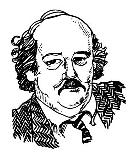(Syndicated to Kansas newspapers May 23, 2016)
 Probably because there was no immediate outroar, you got the feeling in the Statehouse that the reaction was generally good for Gov. Sam Brownback’s decision last week to sign most of the budget bill and take the state revenue shortages out of care for the state’s ill and poor.
Probably because there was no immediate outroar, you got the feeling in the Statehouse that the reaction was generally good for Gov. Sam Brownback’s decision last week to sign most of the budget bill and take the state revenue shortages out of care for the state’s ill and poor.
What?
Yes, his choices were clearly to either cut funding to schools by more than $50 million in the upcoming school year or take roughly the same amount from state programs that provide health care to Kansans without insurance, without much money, and who still need medical care.
Cut spending on schools and you not only get parents of all income levels angry—and the state’s education industry more politically active in the upcoming elections in which the entire House and Senate stand for re-election—but you get the friends, neighbors and grandparents of those schoolchildren upset. And, a lot of those folks vote both in primary and general elections.
Cut spending on health care for the poor who need state assistance to maintain their health, get their children checked before they head to schools and suffer any manner of illness, and, well, those folks don’t vote in very high numbers. Many Kansans who vote probably can’t name a friend or relative who depends on Medicaid (given the catchy name KanCare in Kansas).
Now, that probably outlines pretty clearly why the governor who isn’t on the ballot this year and is unlikely to be in the future chose the health care of the poor for cuts to make the budget balance, or at least appear on paper to balance.
The Legislature, and its members who are after another term or two, can say that they defended K-12 education with their proviso in the budget bill that the governor would have had to line-item veto in order to cut funding for schools, and they won that showdown.
But there wasn’t anything specific about cutting funds for health care for the poor in the budget bill, and the governor won’t face any challenges for those cuts which he could make with his own budgetary authority and without legislative oversight.
So, while you are campaigning, you can say you’ve saved schools a roughly 4 percent reduction in funds, instead allowing without much rancor that same amount of cuts to programs for health care for the poor, who you might or might not bump into at the lottery ticket window or gas pump or garage sale or grocery store.
So at least for conservatives, mostly Republicans, though not all of them, the governor has allowed them to talk about continuing to finance schools, and if on any doorstep in the state any candidate is asked about health care for the poor, they can say, yes, they heard something about that, but they didn’t do it.
Except…of course, if someone behind the screen door wants to know why there wasn’t enough money to take care of schools and the poor, we imagine, a smart campaigner will—depending on the neighborhood—divert the discussion to low taxes or maybe to the renaming of a local highway off-ramp after a well-known constituent.
So that’s why there wasn’t a lot of talk about the governor’s signing of the budget into law. No telling which way that discussion would go, and in an election year, even Democrats and moderate Republicans are unlikely to pledge to support tax increases next session to make sure that the K-12/health care for the poor decision doesn’t crop up again.
Now, it’s just waiting for the monthly state revenue figures to roll in and we learn whether the governor has pared that health care for the poor line item enough to make it to July 1, when a whole new fiscal year opens.
